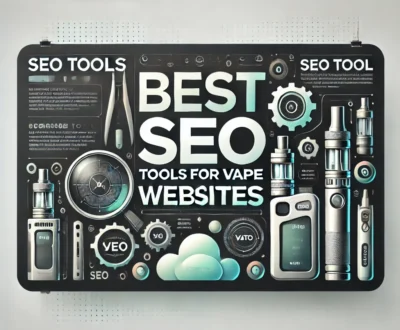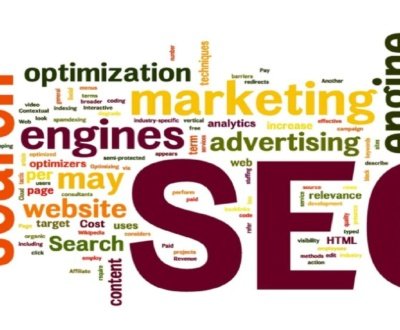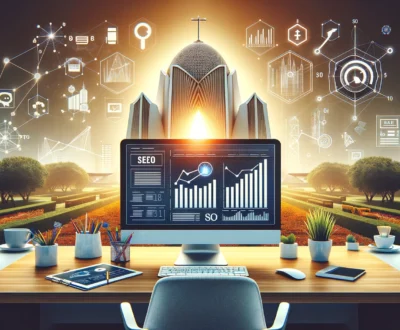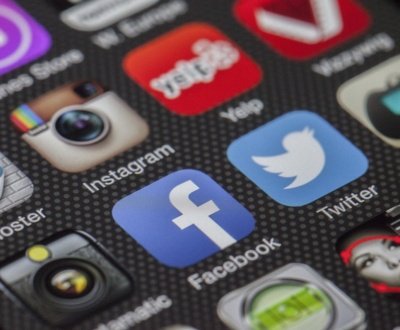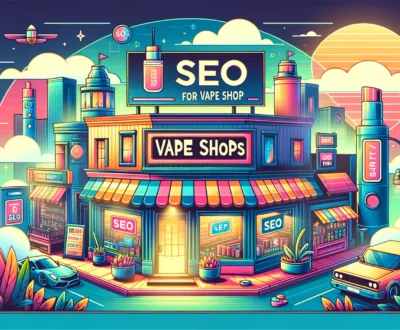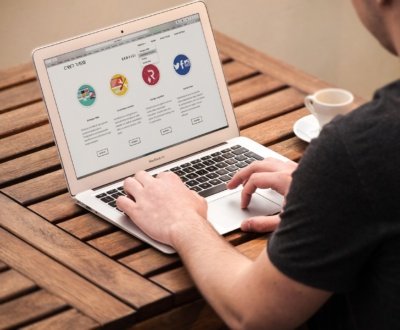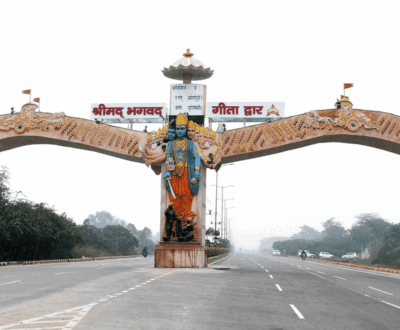Brand Amplification 2025 – Definition, Cycle & Strategies for Maximum Reach
- October 29, 2025
- Digital Marketing
Brand Amplification: The 2025 Guide to Amplify Your Reach

Brand amplification is like turning up the volume on your brand. It’s not just about being seen; it’s about reinforcing your brand’s message, values, and identity across multiple channels so that it resonates and sticks with your audience. In the noisy digital landscape of 2025 – where AI and large language models can answer search queries without clicking through to your site – being memorable and trusted is the key to growth. In this guide, we’ll define brand amplification, explain its benefits, and walk through the full amplification cycle (Ideation, Creation, Engagement, Measurement). We’ll also dive into advanced tactics (AR/VR/AI, omnichannel, community, advocacy) with real examples and actionable tips. Plus, learn how Webgeosolution’s Local SEO, SEO Services and Content Strategy can amplify your brand even further.
Click here to: How much does it cost to hire an seo expert in 2026
Click here for: 15 tips for musicians to optimise their website for SEO
HVAC Social Media Agency That Will Help You Outshine!
What Is Brand Amplification? Definition & Benefits
Brand amplification is the strategic process of expanding your brand’s reach, influence and impact so that it becomes top-of-mind for your audience. It’s more than simply increasing visibility; it means turning up the volume on your brand in a way that is clearer, sharper, and impossible to ignore. Instead of just running ads or posting content, brand amplification uses consistent branding, storytelling and community engagement so that people talk about, trust and choose your brand.
In practice, brand amplification involves investing in visibility, authority, shareability, and engagement. When done right, it ensures your business isn’t just searchable – it’s unforgettable and credible. For example, leading marketing experts note that consumers bombarded with thousands of messages each day only remember brands that leave a lasting impression. A strong amplified brand embeds itself into people’s minds so they don’t just see it once – they remember it and come to trust it. This often turns casual viewers into loyal advocates. In short, amplification doesn’t just increase attention; it builds trust and loyalty by engaging customers at every touchpoint.
Why Brand Amplification Matters in 2025: The digital landscape is changing fast. Search engines and AI now scrape content to provide direct answers, meaning traditional SEO alone may not suffice. Google’s AI is more likely to source answers from trusted, visible brands that have consistently amplified their presence. If your content is buried or your brand is little-known, AI (and therefore users) might ignore you. As one expert puts it, “the more your brand shows up in the digital world, the more likely it is to be cited by AI”. In 2025, building an omnipresent, authoritative brand is essential for being chosen – not just noticed.
Key Benefits of Amplification
-
Memorability: Stand out amid daily advertising noise by embedding your brand in people’s minds.
-
Trust & Credibility: Repeated positive exposure makes your brand familiar and reliable – the foundation of trust.
-
Advocacy: Engaged customers become vocal advocates, generating free word-of-mouth reach.
-
Competitive Edge: In saturated markets, amplification helps your brand break through with a distinct personality and presence.
Webgeosolution’s expertise in Local SEO and SEO Services can kick-start your amplification by ensuring top search rankings. Meanwhile, a strong Content Strategy makes every piece of content engaging and shareable. These services lay the groundwork so that your brand is visible, trusted and ready to be amplified.
The Brand Amplification Cycle: Ideation → Creation → Engagement → Measurement
Brand amplification is not a one-off tactic; it’s a cycle with four core stages: Ideation, Creation, Engagement, and Measurement. Each stage builds on the last, creating a virtuous loop of brand growth.
1. Ideation & Strategy
Every amplification effort starts with a solid plan. Define who your audience is, what your brand stands for, and what unique value you offer. (As one marketing expert warns, you can’t amplify confusion – if your core message isn’t clear, all the noise you make only spreads confusion.) Ask: Who is this for? What sets us apart? Why should anyone care? This deep work – often part of branding and positioning – becomes the “signal” that amplification will increase. If your brand identity and value proposition are strong, amplification will multiply that effect; if not, it wastes resources.
Actionable Tips for Ideation:
-
Audience Research: Use surveys, analytics, and social listening to pinpoint your ideal customers’ interests and needs.
-
Brand Audit: Ensure your mission, values and visual identity are consistent and compelling across all channels.
-
Content Themes: Brainstorm broad themes and story ideas that reflect your brand’s voice and solve real customer problems.
-
Strategic Partnerships: Identify potential partners or influencers whose audience aligns with yours. Collaborating can borrow trust from their established credibility.
2. Content Creation
With strategy defined, create high-quality, on-brand content and assets. This includes blog posts, videos, social graphics, podcasts – any format your audience consumes. The content must be valuable and authentic, not just SEO fluff. Think of each piece as a piece of your brand story; it should reinforce your identity and message.
Key considerations:
-
Repurpose Across Channels: An article can become a social post, infographic, or video snippet. Repurposing multiplies reach without a proportional effort increase.
-
Design for Shareability: Use attention-grabbing visuals and headlines. Encourage sharing by adding branded hashtags and CTA prompts (like “tag a friend who needs to see this”). For example, beauty brand Glossier designs “Instagrammable” packaging so customers readily photograph and share it.
-
User-Generated Content (UGC): Create content initiatives that turn customers into storytellers. UGC (photos, reviews, testimonials from customers) is up to 2.4× more authentic than brand-produced content. Contests or features (e.g. “Fan Photo of the Week”) incentivize UGC.
-
Employee Advocacy: Equip your team with shareable content and encourage them to post on their networks. Content shared by employees sees about 8× more engagement than corporate posts. (Just ensure participation is voluntary and voices are genuine.) Starbucks, for instance, empowers baristas to share latte art and community events, turning staff into passionate advocates.
Webgeosolution’s Content Strategy team can help craft this content plan. As their site notes, they “engage your audience through great, original content”. That aligns perfectly with amplification: expert-driven content that gets people talking.
3. Engagement & Distribution

Great content needs great distribution. Engagement means putting your content where your audience is and encouraging interaction. This involves omnichannel integration – using all relevant channels in a coordinated way. Omnichannel marketing blends online and offline touchpoints into a seamless brand experience. Consumers might see your post on Instagram, click through to your site, chat in your Facebook group, and finally buy via your mobile app – and the brand experience should be consistent at every step.
Tactics for Engagement:
-
Omnichannel Presence: Be on all key platforms (search, social media, email, YouTube, etc.) with consistent branding. For example, a retailer might sync its Google Shopping ads, in-store signage and Instagram posts so the messaging feels unified. This builds a cohesive brand strategy and identity across channels.
-
Social Media & Community: Use social media not just to broadcast, but to have conversations. Reply to comments, join relevant discussions, and encourage community around your brand. Consider hosting live Q&A sessions, webinars or AMAs. Building a dedicated online community (forums, private groups or branded hashtags) turns customers into fans. Brands like Harley-Davidson and Apple famously built passionate communities (e.g. Harley Owners Group, Apple’s support forums) that revolve around shared identity and values.
-
Local Engagement: For local businesses, optimize for Local SEO so your brand appears in local searches, maps and directories. Webgeosolution’s Local SEO service “increases visibility of your business by driving your website to the top of local listings, ensuring you’re seen by customers in your area.
-
Influencer & Advocate Outreach: Partner with micro-influencers or brand advocates whose followers trust them. Even local ambassadors (loyal customers) can spread word-of-mouth. Encourage product reviews, testimonials, and referrals – they extend your reach organically.
-
Earned Media & PR: Pitch stories or insights to industry publications and podcasts. As one guide notes, a single well-placed quote in a respected outlet can introduce your brand to new audiences and boost your credibility with both people and AI. These off-site signals (news mentions, backlinks, reviews) act as endorsements that amplify your authority.
4. Measurement & Optimization
Finally, track and measure performance so you know what’s working. Brand amplification involves both branding and demand-generation metrics. Important KPIs include: brand mentions, social engagement, share of voice, branded search volume, traffic, sentiment, leads/sales and more. Social listening tools (e.g. Hootsuite, Brandwatch) and web analytics (Google Analytics, SEMrush) help gather this data.
Key metrics to watch:
-
Brand Mentions & Share of Voice: How often is your brand name or hashtags appearing in media and social? (Includes indirect mentions.)
-
Search Visibility: Track branded search volume and ranking for key terms. Higher branded search interest indicates growing awareness.
-
Engagement Rates: Monitor likes, shares, comments and time on page. High engagement signals resonance.
-
Traffic & Conversions: Check referral sources and conversion rates. Measure how amplified content moves visitors through the funnel (e.g., downloads, sign-ups).
-
Sentiment & Feedback: Use surveys or social sentiment analysis to gauge brand perception.
Make it a loop: analyze results, refine your messaging and tactics, then repeat the cycle. Over time, earned reach (sharing by customers, media mentions) compounds and costs less than paid ads. Brand awareness is also linked to trust and loyalty, which ultimately boost ROI.
Advanced Brand Amplification Strategies
Beyond the basics, cutting-edge strategies can supercharge your amplification in 2025.
Emerging Technologies: AR, VR & AI
New tech can create memorable, interactive brand experiences. For example, Augmented Reality (AR) allows customers to virtually “try on” products or explore a brand story. A classic example is IKEA’s AR app that lets you place furniture in your room. AR “try-before-you-buy” features and branded filters (like on Snapchat/Instagram) boost engagement and shareability. Virtual Reality (VR) can immerse users in your brand world – e.g. a VR showroom or 360° product tour. The result is high engagement and longer interaction times. According to industry reports, AR/VR campaigns deliver 3× brand lift and much higher engagement than flat ads.
Meanwhile, Artificial Intelligence (AI) transforms personalization and content creation. AI-driven content tools (ChatGPT, DALL·E, etc.) can help generate copy, visuals or video ideas at scale, speeding up content creation. AI also enables hyper-targeted advertising (predicting which message best resonates with which audience) and chatbots that provide instant customer answers. Data analytics powered by AI can reveal hidden audience segments and optimize campaign timing. In short, brands using AI can tailor experiences that feel uniquely relevant, amplifying their message.
Tip: Experiment with AI content generation but always add human expertise. Ensure any AI-created content stays on-brand and accurate.
Omnichannel Integration
Omnichannel marketing ties all channels together so your brand story is seamless. It means customers can engage on any platform and still get the same message and experience. For example, a retailer might synchronize their email campaigns with their website offers and in-store promotions so that a customer sees a consistent deal everywhere. This cohesive strategy simplifies recognition and builds trust.
Actionable Step: Create a content calendar that covers all channels. When you launch a campaign, deliver coordinated assets (social posts, blogs, emails, in-person events) that reinforce each other. Use tools (like integrated CRM and analytics) to track user activity across touchpoints, optimizing each for that user’s journey.
Community-Building and Brand Advocacy
Building a brand community is one of the most powerful amplification engines. Communities (online forums, social groups, clubs, loyalty programs) unite customers around shared interests in your brand. Members support one another, share tips, and proudly show off their affiliation. This creates free word-of-mouth and a sense of belonging that commercials can’t buy. Successful examples include Apple’s user forums and “Today at Apple” workshops, or Harley-Davidson’s local chapters and events. These communities are less about selling and more about identity – which deepens loyalty and turns customers into evangelists.
Brand advocates (ambassadors) take it a step further by actively promoting you. These can be happy customers, enthusiastic employees, or influencers. According to Zendesk, brand advocates “positively promote your business… boosting awareness and helping reach a larger audience. They can appear anywhere – in reviews, social shares, or offline conversations. For example, beauty brand Glossier made every customer a mini-influencer by encouraging users to share product selfies, building a billion-dollar brand on UGC.
Actionable Tips for Community & Advocacy:
-
Host exclusive events or online gatherings for loyal customers.
-
Create a “brand ambassador” program with incentives for referrals and social posts.
-
Highlight advocates in your marketing (testimonials, spotlight features).
-
Monitor feedback and involve community members in product ideas – Co-creation makes them feel valued.
Cross-Channel Partnerships
Another strategy is forming strategic partnerships with complementary brands to tap into each other’s audiences. For instance, GoPro (action cameras) and Red Bull (extreme sports media) teamed up to share content: Red Bull got amazing action footage, and GoPro reached Red Bull’s fans. Find brands that share your target demographic but aren’t direct competitors. Joint webinars, bundle offers, or co-hosted events can amplify both brands without doubling spend.
Performance Measurement and Continuous Improvement
Finally, ensure rigorous measurement. Use dashboards to track brand KPIs (mentions, engagement, search trends) over time. Test different content types and channels, then double down on what works. Remember that amplification efforts build on each other – a mention in the press not only brings traffic today, but also contributes to your future authority. Over time, earned media (shares, backlinks, mentions) becomes an asset that compounds, much more so than one-off ads.
Real-World Examples & Actionable Tips
-
Glossier (Beauty Brand): Glossier’s founders designed their packaging to be highly shareable on social media. They turned every customer into a walking billboard by encouraging product selfies. The result: organic brand advocacy and explosive growth. Tip: Look for ways to make your product or content inherently “instagrammable” or sharable.
-
Apple (Tech): Apple’s ecosystem and community (forums, store workshops, developer conferences) keep users deeply engaged. By focusing on education and peer support (e.g. Today at Apple sessions), they amplify loyalty and word-of-mouth. Tip: Offer free tutorials or user groups around your product. When customers learn and solve problems together, they become brand champions.
-
Nike (Athletic Apparel): Nike turned solitary activities (running, training) into a community via its Nike Run Club app and events. By offering free guided workouts and challenges, they inserted their brand into customers’ daily routines, boosting engagement and retention. Tip: Provide value-added experiences (apps, clubs, challenges) that keep customers returning.
-
Local Success Story: Consider a local restaurant that started a TikTok cooking challenge. By encouraging fans to recreate dishes at home and tag the restaurant, they earned thousands of views and social shares. Tip: Use local or viral trends to spark UGC campaigns – it's a low-cost way to amplify your brand across new audiences.
Throughout every step, remember: Branding + Earned Media = Amplification. Paid ads can jumpstart awareness, but true amplification comes when your brand earns attention through valuable content, relationships, and experience.
Measure What Matters
Regularly review metrics to prove ROI. For example, a PR firm recommends tracking: brand mentions, social engagement, share of voice, branded search volume, website traffic, and conversions. Surveys or Net Promoter Score (NPS) can gauge brand recall and loyalty gains. Use these insights to refine your strategy: if a particular campaign generated a spike in brand searches, analyze why and replicate it.
Why Work with Webgeosolution
Brand amplification is a big-picture endeavor that blends content, SEO, social, and tech. Webgeosolution’s team specializes in creating and executing data-driven strategies across all these areas. Their Local SEO experts ensure your business gets seen in local searches, their SEO specialists deliver high search rankings, and their Content Strategy team crafts the engaging content that audiences share. Together, these services amplify your brand’s reach and trustworthiness.
Ready to Amplify Your Brand? Contact Webgeosolution for a free consultation. Our experts will analyze your current brand presence and design a tailored amplification plan – from ideation to measurement – that boosts your visibility and authority. Let us help you build a cohesive, multi-channel strategy that turns your customers into advocates. Amplify with confidence in 2025!
FAQ
What is the Brand Amplification Cycle?
It’s the process of Ideation (strategy), Creation (content/assets), Engagement (distribution/community), and Measurement (metrics/optimization). Each stage feeds the next in a loop that continually strengthens your brand presence.
How do AR, VR and AI contribute to brand amplification?
AR/VR create immersive experiences (virtual try-ons, 360° tours, interactive games) that deeply engage customers and are often widely shared. AI enables personalized content, chatbots and data insights to target audiences more effectively. Together, these emerging technologies make your brand more innovative and memorable.
Why is community-building important for brand amplification?
A strong community transforms customers into loyal supporters and evangelists. Brands like Apple and Harley-Davidson grow by uniting customers around shared passions and values. These communities generate word-of-mouth and free advocacy, greatly extending your reach.
How should I measure brand amplification success?
Track both awareness and engagement metrics: brand mentions, social media reach and engagement, share of voice, branded search volume, website traffic, and conversions. Also monitor qualitative feedback and sentiment. Use these KPIs to assess growth in brand visibility and trust over time.
How can Webgeosolution help with brand amplification?
Webgeosolution offers SEO services, Local SEO, and content strategy expertise to boost your search visibility and brand messaging. By combining these services into a unified plan, they ensure your brand shows up in the right channels with compelling content – accelerating your amplification cycle and driving measurable growth.
Meet Vaibhav Sharma, the visionary owner of Webgeosolution, a cutting-edge AI agency at the forefront of technological innovation. Hailing from the vibrant state of Haryana, Vaibhav's journey into the world of artificial intelligence is nothing short of inspiring. Armed with a Bachelor's degree in Information Technology, Vaibhav embarked on a quest to marry his passion for technology with a desire to push the boundaries of what's possible. His entrepreneurial spirit led him to establish Webgeosolution, where he weaves the magic of artificial intelligence into practical solutions for businesses.
About us and this blog
We are a digital marketing company with a focus on helping our customers achieve great results across several key areas.
Request a free quote
We offer professional SEO services that help websites increase their organic search score drastically in order to compete for the highest rankings even when it comes to highly competitive keywords.
Subscribe to our newsletter!
More from our blog
See all postsRecent Posts
- Top 10 SEO Tools to Boost Vape Website Rankings December 19, 2025
- Best SEO Service in Calgary December 17, 2025
- No.1 Company of SEO in Chandigarh December 17, 2025

